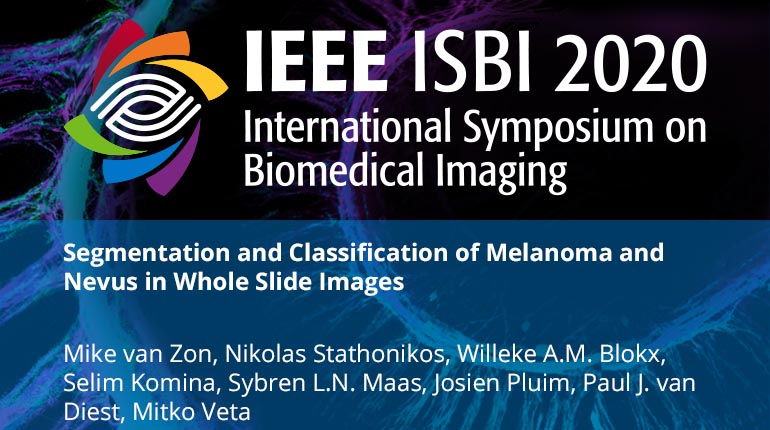
Already purchased this program?
Login to View
This video program is a part of the Premium package:
Segmentation and Classification of Melanoma and Nevus in Whole Slide Images
- IEEE MemberUS $11.00
- Society MemberUS $0.00
- IEEE Student MemberUS $11.00
- Non-IEEE MemberUS $15.00
Segmentation and Classification of Melanoma and Nevus in Whole Slide Images
The incidence of skin cancer cases and specifically melanoma has tripled since the 1990s in The Netherlands. The early detection of melanoma can lead to an almost 100% 5-year survival prognosis dropping drastically when detected later. Studies show that pathologists can have a discordance reporting of melanoma to nevi up to 14.3%. An automated method could help support pathologists in diagnosing melanoma and prioritize cases based on a risk assessment. Our method used 563 whole slide images to train and test a system comprising of two models that segment and classify skin sections to melanoma, nevus or negative for both. We used 232 slides for training and validation and the remaining 331 for testing. The first model uses a U-Net architecture to perform a semantic segmentation and the output of that model was used to feed a convolution neural network to classify the WSI with a global label. Our method achieved a Dice score of 0.835 ? 0.08 on the segmentation of the validation set and an weighted F1-score of 0.954 on the independent test dataset. Out of the 176 melanoma slides, the algorithm managed to classify 173 correctly. Out of the 62 nevi slides the algorithm managed to correctly classify 57.
The incidence of skin cancer cases and specifically melanoma has tripled since the 1990s in The Netherlands. The early detection of melanoma can lead to an almost 100% 5-year survival prognosis dropping drastically when detected later. Studies show that pathologists can have a discordance reporting of melanoma to nevi up to 14.3%. An automated method could help support pathologists in diagnosing melanoma and prioritize cases based on a risk assessment. Our method used 563 whole slide images to train and test a system comprising of two models that segment and classify skin sections to melanoma, nevus or negative for both. We used 232 slides for training and validation and the remaining 331 for testing. The first model uses a U-Net architecture to perform a semantic segmentation and the output of that model was used to feed a convolution neural network to classify the WSI with a global label. Our method achieved a Dice score of 0.835 ? 0.08 on the segmentation of the validation set and an weighted F1-score of 0.954 on the independent test dataset. Out of the 176 melanoma slides, the algorithm managed to classify 173 correctly. Out of the 62 nevi slides the algorithm managed to correctly classify 57.
 Cart
Cart Create Account
Create Account Sign In
Sign In





